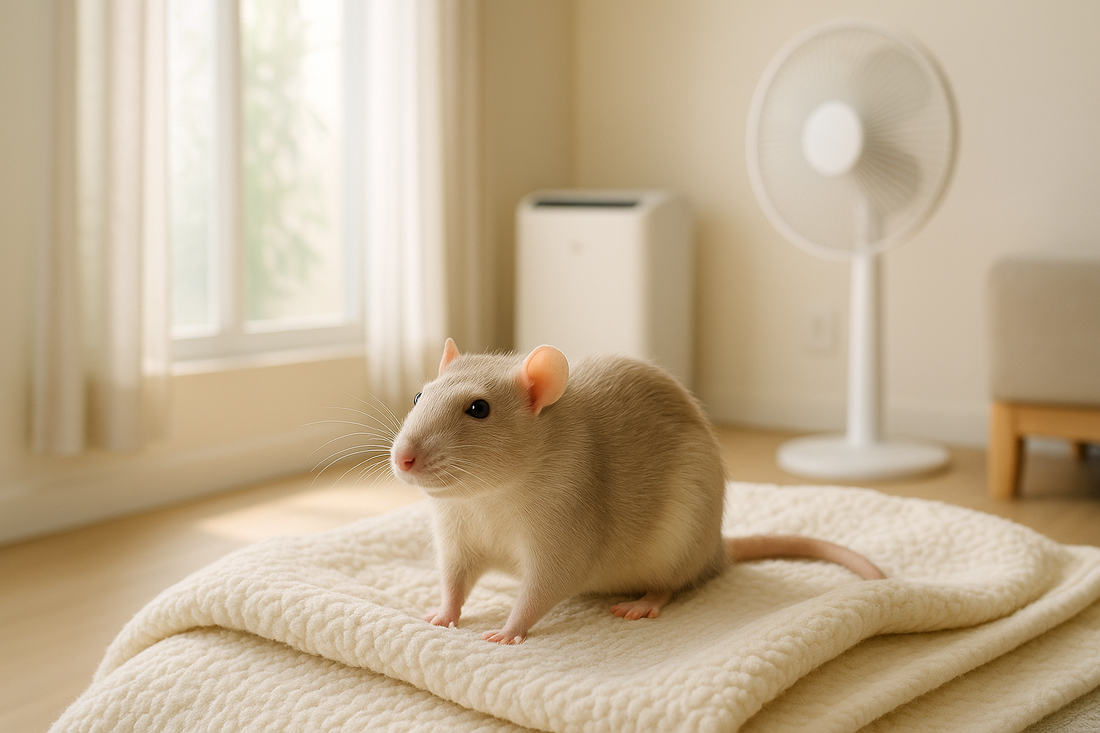
Rats & Humidity – How to Spot Early Signs of Respiratory Distress in Singapore
Share
In sunny Singapore, humidity is something we live with every day, but for our little rats, it’s more than just sticky discomfort. High humidity can silently impact their respiratory health, making them vulnerable to infections and long term breathing issues.
As fellow rat parents, we know how quickly things can escalate. Here’s what you need to know about humidity, early signs of respiratory distress, and what you can do to help your rats breathe easy.

🌫️ Why Humidity Matters for Rats
Rats have sensitive respiratory systems. In the wild, they burrow and live in relatively stable conditions. But in our homes, especially in Singapore’s constantly humid climate, trapped moisture can encourage bacteria, mold, and allergens to thrive.
When paired with poor ventilation, dusty bedding, or ammonia buildup from urine, the risk of respiratory issues skyrockets.
🚨 Early Signs of Respiratory Distress in Rats
Spotting symptoms early can make all the difference. Watch closely for:
- Frequent sneezing or sniffling
- Wheezing or clicking sounds while breathing
- Porphyrin (reddish staining) around eyes or nose
- Laboured or shallow breathing
- Loss of appetite or lethargy
- Hunched posture, puffed fur, or inactivity
If your rat shows multiple symptoms or if symptoms persist for more than a day, don’t wait. It’s time to take action.
🧼 Home Environment Tips to Reduce Risk
Here are practical steps you can take in Singapore to protect your rats’ lungs:
✅ Control Humidity Levels
- Use a dehumidifier, especially in enclosed rooms or during rainy seasons.
- Keep indoor humidity between 50 to 65 percent if possible. Try to stay below 70 percent for better respiratory health.
- Monitor with a digital hygrometer (affordable and easy to use!).
✅ Improve Air Quality
- Invest in a HEPA air purifier to filter dust, dander, and allergens.
- Avoid aerosol sprays, incense, and strong smelling cleaning products.
- Place the cage away from kitchens, windows, and smoke prone areas.
✅ Choose Safe Bedding
- Avoid wood shavings like pine or cedar.
- Opt for paper based, low dust bedding.
- Change bedding regularly to prevent ammonia buildup.
🩺 When to See a Vet
Respiratory infections can become serious and even fatal if untreated. If your rat shows signs like:
- Persistent wheezing or laboured breathing
- Reduced movement or appetite
- Discharge from the nose or eyes
- Unusual behaviour
📍It’s best to consult a rat savvy vet. We’ve compiled a list of recommended vets here: Rat Savvy Vet_
💚 Final Thoughts from One Rat Parent to Another
You’re doing a great job caring for your ratties, and being aware of the risks is already a big step. With the right setup and a little vigilance, your rats can live healthy, happy lives despite our tropical climate.
🔗 Looking for help?
🛒 Check out our Air Quality Essentials:
From rat safe bedding to enrichment and cleaning solutions, visit our shop here
💬 Join our Telegram community:
Ask questions, share your story, or just lurk and learn.
👉 https://t.me/theonepetclub
📲 Follow us on IG and FB for more local advice:
@theonepet



